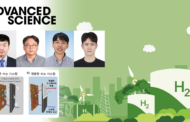The Ministry of Environment announced on April 30 that focused ozone (O₃) management measures will be implemented nationwide from May to August 2025. Unlike the good O₃ in the stratosphere that protects life on Earth from harmful ultraviolet (UV) radiation, ground-level O₃ forms through reactions between pollutants from urban areas and intense sunlight, posing a significant threat to respiratory health.
While O₃ pollution has traditionally been associated with high concentrations during daytime in urban areas, recent observations have identified persistent high O₃ levels over rural regions during nighttime. These findings indicate that O₃ can remain trapped and concentrated over rural areas for extended periods, highlighting the need to address gaps in current monitoring and management systems.
A research team, led by Professor Jungho Im in the Department of Civil, Urban, Earth, & Environmental Engineering at UNIST analyzed satellite data using their self-developed AI model and confirmed that O₃ can linger over rural areas throughout the night.
O₃ is a secondary pollutant generated through photochemical reactions involving sunlight and airborne contaminants, reaching its peak during the afternoon when temperatures are highest. Due to its small molecular size, O₃ can penetrate deep into lungs, potentially causing inflammation and other health issues. Despite its dangers, O₃ is a colorless, odorless gas, necessitating the development of precise real-time monitoring systems.
In this study, the team developed an AI-based all-sky model O₃ model, capable of estimating ground-level O₃ concentrations across East Asia at high resolution over 24-h cycle at an hourly 2 km resolution, regardless of cloud cover.
 Figure 1. Schematic image, illustrating the distinct diurnal O3 trends between urban and rural areas.
Figure 1. Schematic image, illustrating the distinct diurnal O3 trends between urban and rural areas.
Yejin Kim, the lead author, explained, “Previous models faced difficulties when clouds obstructed the view of the ground, leading to gaps in data and less accurate estimates.” She further noted, “Our all-sky model overcomes this limitation by accurately estimating O₃ levels even under cloudy conditions, enabling continuous monitoring regardless of weather or time of day. Additionally, it offers 40 times higher spatial resolution than existing global air quality reanalysis datasets (CAMS), allowing detection of localized high O₃ concentrations in small areas.”
Analysis using this model across East Asia revealed that O₃ levels are higher during the day in urban areas. Notably, some rural regions near cities show that O₃ does not decrease rapidly after sunset; instead, it remains at elevated levels for extended periods.
“Most ground-based O₃ sensors are concentrated in urban centers, which makes it challenging to accurately reflect regional and temporal variations,” said Professor Im. “Our model provides detailed insights that can be essential for formulating targeted environmental policies, such as seasonal ozone management strategies.”
The researchers combined data from Himawari-8 satellite brightness temperature, meteorological variables such as temperature, wind speed, and solar radiation, and applied explainable AI techniques to analyze the factors influencing O₃ formation. Brightness temperature, which reflects infrared energy detected by satellites, is affected not only by actual temperature but also by environmental conditions like sunlight and atmospheric heat.
The AI model indirectly assesses the potential for O₃ formation through brightness temperature. Analysis of the model’s prediction process revealed that brightness temperature had the greatest influence on O₃ estimation, confirming its vital role in precise prediction.
This study was supported by the Ministry of Environment, the Ministry of Oceans and Fisheries, and the Ministry of Education. The findings were published in the Journal of Hazardous Materials on May 5, 2025.
Journal Reference
Yejin Kim, Seohui Park, Hyunyoung Choi, and Jungho Im, “Comprehensive 24-hour ground-level ozone monitoring: Leveraging machine learning for full-coverage estimation in East Asia,” J. Hazard. Mater., (2025).












